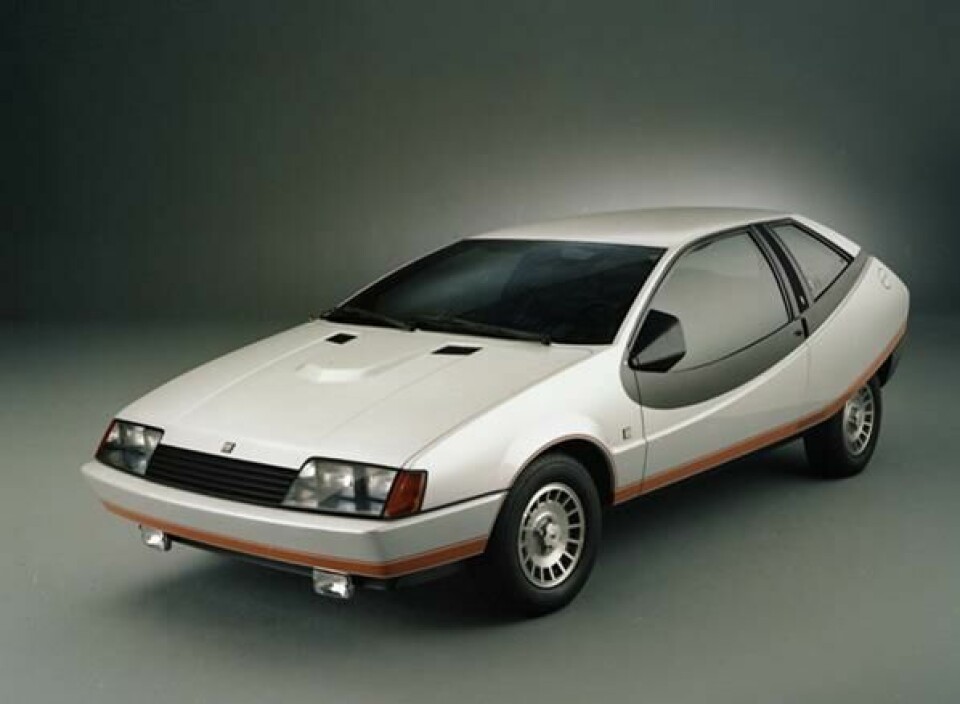
CCotW: Ford Megastar I and II (1977, ‘78)
Marrying the exotic wedge to the sensible sedan, with the help of divisive graphics
As the 1970s reached their midpoint and the automotive industry began to absorb the oil shocks of the decade, manufacturers began looking to the next generation of cars that would be coming in the early 1980s.
The wedge form was very popular in automotive design at the time, but that typology worked best for sports cars. It was difficult to adopt it to a family car format.

Bertone Ascot. ’70s wedge design soon spread beyond fanciful ‘supercars’
This is not to say it wasn’t tried. Gandini’s Jaguar Ascot of 1977 showed a wedge mated to a trapezoidal box, with a generous glass house. The Aston Martin Lagonda, designed by William Towns and launched in 1976, was often derided for its long form and sharp snout, but managed to marry a four-door sedan format with the wedge.
Ford looked at these ideas and thought its own Ghia design house should try to bring some of these design sensibilities to the problem of the family car.

Ford’s own Granada provided a basis for the project
The result, first shown in Geneva in 1977, was a predictably wedgy front married to a boxy cabin. The cabin was roomy enough for easy family access, as it was based on the Ford Granada of the time.
The Megastar retained its donor car’s V6 engine and four-speed transmission, placed under the angular front end.

The results were about as different from a Granada as possible
Compared to the front, the passenger cabin looked tall and boxy, but it was enlivened by its trapezoidal shape – and by the most distinctive feature on the car: the enormous curving side glass. Some 80 percent of the front door on each side was glazed, and a smaller portion of the rear door.
These panels were fixed, and there was no air conditioning installed on the car, so with just standard ventilation and all that glass area, it made for warm travelling indeed.

Dramatic DLO made for quite the fishbowl…
The curved glass made for quite a side graphic, along with a band of body colour that reinforced the trapezoidal shape of the cabin. The curved glass sat in uneasy contrast to all the angles, and critics and designers were divided in their opinion of it. Did it effectively soften the angular composition of the body, or was it just an awkward intrusion into the overall design?
Whatever the critics thought of the car, Ford thought the concept was solid enough to bring a successor to Geneva the following year: the Ford Megastar II. This time, the concept was a two-door coupé based on a Ford Taunus. The same wedgy box shape and teardrop side graphics characterized the car.

The shorter-wheelbase Taunus underpinned the sequel
The Megastar II sat five people and, learning from the original car, had a triangular vent panel and rear windows that lowered for ventilation. No word on whether an air conditioner was installed, though. At the rear, a full height hatch allowed easy access to the cargo area.
In some ways, both cars unwittingly previewed some of the tall compact wagons like the Nissan Prairie that would appear in the 1980s.

Mk.II had the same mix of rectilinear profile and curvy graphics
Both cars are remembered for their strong side graphics and copious amount of glass. They were also an early experiment in aerodynamic sedans.
Ghia’s managing director at the time, Fillippo Sappino said of the cars, “Although not a production car, the Megastar II demonstrates ideas and concepts that might be used on Ford cars of the future.”

These cars experimented with both styling and aerodynamics
“On our Megastar project, we have paid particular attention to aerodynamics,” he added. “The sleek design helps conserve energy and improve fuel economy and performance.”
In the end, the Megastar concepts had only marginal influence on future Fords. Still, they were interesting experiments in packaging, and artefacts from an era that was enamoured with strong graphics.



